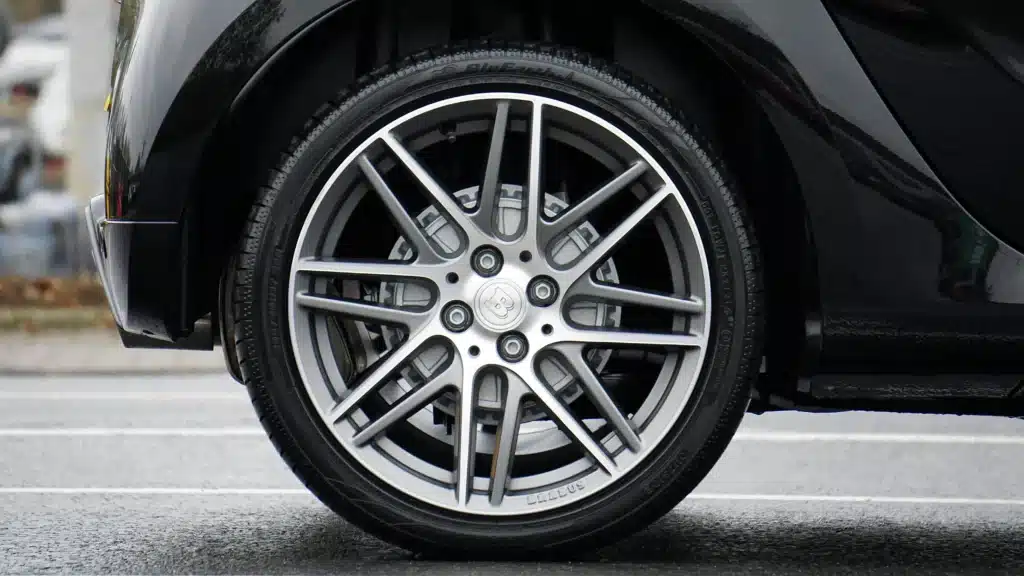It's not common knowledge that tires start out white, but look black once they're on your car
Published on Aug 27, 2025 at 5:08 AM (UTC+4)
by Grace Donohoe
Last updated on Aug 26, 2025 at 7:08 PM (UTC+4)
Edited by
Emma Matthews
Nowadays, the color of tires tends to be black, but once upon a time, the rubber wheels on a car were actually white.
Tires are known to be black in color, but the tires you see today haven’t always had the same hue.
You see, over the years, different things have been added to the rubber mix to gain durability and strength.
The story begins, though, right in the middle of the forest.
VISIT SBX CARS – View live supercar auctions powered by Supercar Blondie
Tires didn’t always have the black look that we see today
When we think of cars, we can list all the elements that make up the vehicle as a whole.
From the steering wheel to the engine to the chassis, there is one key element that makes cars road-ready: the wheels.
But, back in the old days, the rubber wheels were actually white due to the tree sap that rubber was made out of.
But, the reason they’re black now? Well, that’s all to do with adding carbon black.
One content creator took to the internet to explain the story behind tires, shocking car enthusiasts in the process.
Creator drive.verse detailed the reasons why, and you’ll be surprised.
“Back in the day, to get natural rubber, they would cut the rubber of Hevea trees, and a milky white sap would drop out; they collected it, cleaned it, and processed it to make tires,” it continued.
This explains why they were this color up until the early 1900s.
But is that the case now?
“In the early days of cars, tires were white. Since natural rubber was not ideal for tires, they were fortified with zinc oxide, another white material,” states the American National Standards Institute.
The Institute also explained that ‘superior carbon black later replaced zinc oxide as a means to strengthen’ the rubber.
Later, whitewall tires were also born, too.
“Radial tires superseded their stance as the common tire, as they remain today.
Some companies still offer whitewall tires in the modern world, although their applications typically fall with retro-styled cars and restorations, “ANSI continued.

Weighing in on different reasoning behind this, Michelin also had its say.
“Rubber’s natural color is white, and it wasn’t until the early 1900s that manufacturing companies added carbon to the tire’s tread to strengthen them, resulting in whitewall tires.
Later, carbon chemicals were added to the whole tire, making it entirely black,” it stated in a social media post.
Cars have developed a whole lot since the 1900s
Over time, mechanics, design, and engineering have advanced in more ways than one.
From old muscle cars and new takes on the American classic, to brand EVs, the car industry has changed massively and has shocked gearheads in the process.
In fact, one F1 rookie was blown away by how different vintage race cars actually are as Alain Prost was reunited with his 1988 McLaren at Goodwood.
Plus, we bet that this vintage US car collection with 225 classics and 48 Ford Model Ts will take you back in time.
DISCOVER SBX CARS: The global premium car auction platform powered by Supercar Blondie




